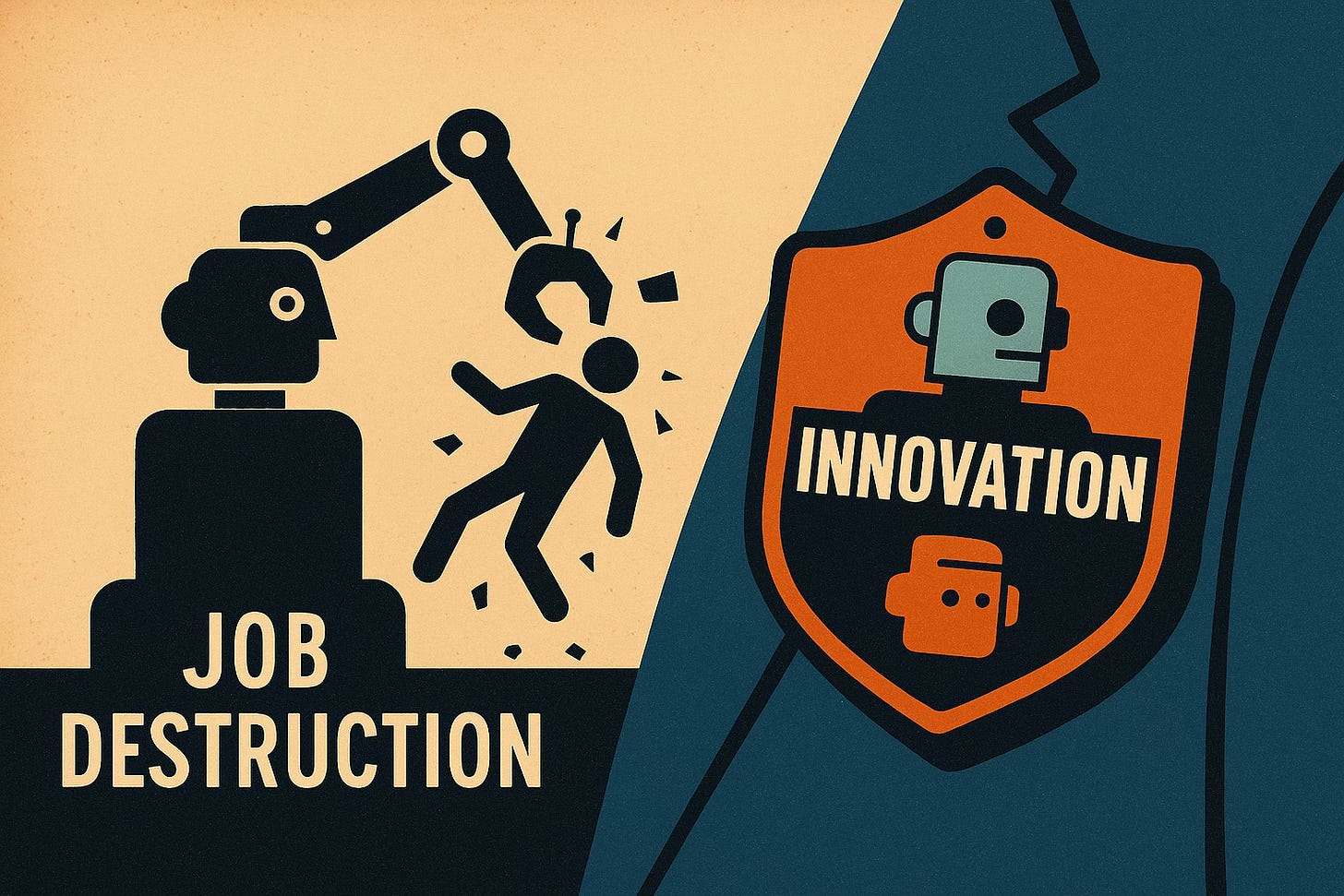In today’s tech industry, a curious shift has taken root: the celebration of job elimination.
What was once an uncomfortable byproduct of progress is now, in many cases, touted as a sign of success. From startup pitches to keynote speeches to quarterly earnings Zoom meetings, it’s become increasingly common to hear founders, CEOs and CFOs boast not just about efficiency or scalability, but about how many human workers their technology will replace. It's a trend that invites both admiration and alarm.
The Allure of Disruption
The concept of disruption (thank you, Clay Christensen) has long been the North Star for innovators. In a world where software is eating the world, the goal is often to scale the unscalable. Automation, AI, and software platforms promise unprecedented gains in productivity and profits—and, naturally, reduced dependency on human labor.
For VCs and tech media alike, these metrics can be compelling. Cutting headcount often correlates with higher operating margins and shorter paths to profitability. For early-stage companies, demonstrating that their solution can displace expensive labor is seen as a sign of market opportunity and defensibility.
Job Elimination as Innovation: A Call for Balance
Startups increasingly tout job elimination as a marker of innovation, pitching it as a core value in investor decks and interviews. While replacing dangerous or repetitive work can be a social good, indiscriminate cuts raise questions about the broader purpose of technology.
AI’s rapid advancement brings white-collar automation to the forefront, displacing roles once seen as secure. But job loss isn't always offset by timely retraining or new opportunities, creating a growing gap between technological efficiency and economic equity.
True innovation should empower, not just eliminate. The companies that lead tomorrow may be those that use technology to enhance human potential—augmenting work, investing in skills, and redefining progress to prioritize both productivity and dignity.
There are three broader concerns worth highlighting:
First, when leadership publicly celebrates job cuts, it sends a chilling message to those who remain. Morale often deteriorates, and top performers—feeling undervalued and potentially expendable—may choose to leave.
Second, if AI is being deployed at scale to eliminate roles, it must be accompanied by a serious investment in reskilling. Hiring new AI-literate talent is significantly more expensive, and such talent remains in short supply.
Third, at a societal level, there are serious implications to consider as white-collar and entry-level positions are hollowed out. The long-term economic and social consequences of this shift deserve far more attention.
Positioning AI-driven layoffs as a sign of success carries deeper consequences that deserve thoughtful consideration—beyond the applause of media headlines or among industry insiders.
Conclusion
As job elimination becomes a celebrated metric of innovation, it's worth pausing to ask: innovation for whom? Efficiency and disruption have their place, but so do inclusion, empowerment, and responsibility. The future will belong to companies that don’t just reduce headcount—but raise the standard for what work can be.




